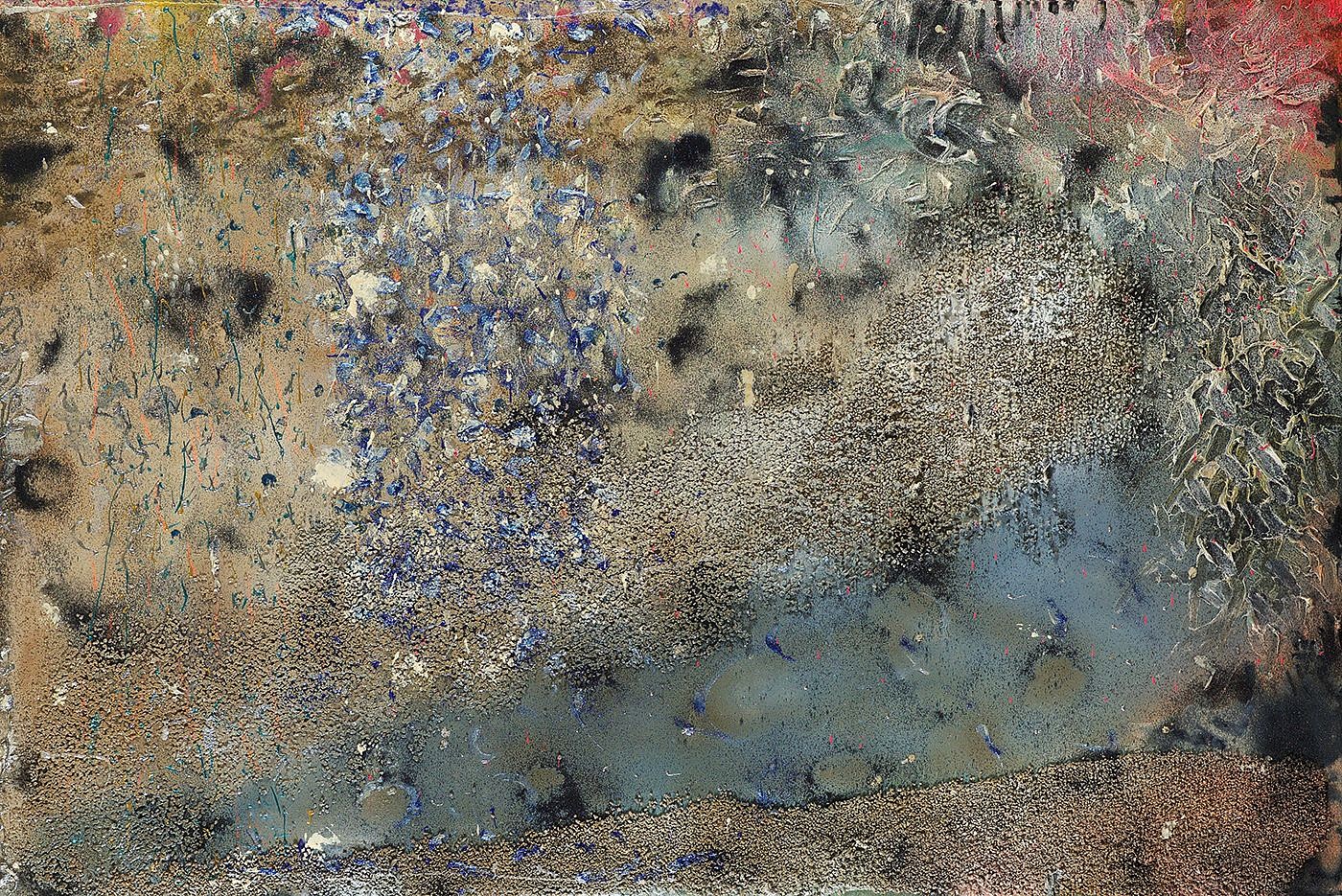Info

Stanley Boxer
Apr 21 – May 21, 2016
Throughout his five decade-long career, Stanley Boxer broke through the barriers that often divided the artists of his day. In the 1960s, he was deemed a Color Field Painter, but at the time he was already moving toward the material specificity of process art, building dense surfaces with unexpected additives, such as sand, stones, glitter, sawdust, wood shavings, and dressmaker’s beads. However, Boxer stopped short of letting his materials speak for themselves. More interested in the end result than in his process or materials, he expressed his love for intense optical experiences in their own right and sought to create new forms that would excite the eye.
Boxer found a meeting ground among the competing ideologies of his time, while maintaining his distinctive artistic identity. His paintings, sculptures, collages, and drawings can be linked to contemporary artistic currents, but throughout he maintained a commitment to creating surfaces characterized by intense radiance and nuance, designed with “a kind of choreography of material,” as described in Arts Magazine by Judith Van Baren in 1974. In marble, stone, and wood sculpture, he created abstract compositions in which textures and materials play expressive roles and received acclaim for his work in all mediums.
It is interesting to read the substantial body of criticism of Boxer’s work for its conflicting viewpoints. To some critics, Boxer demonstrated minimalist tendencies—in his striving for directness, for example. To others, he was gargantuan in his inclusiveness—incorporating into his work anything he could get his hands on. Whereas one critic described his art as demonstrating a luminosity that evokes a “tranquil, almost spiritual” quality, another related his work to the drama of Baroque art, in the way that he was drawing with color, using strokes that “built up to a pictorial climax.” Some commentators observed the contradictions. In the Partisan Review in 1996, Karen Wilkin described Boxer’s works as “at once lyrical and brutal.” In 2004, Grace Glueck wrote in the New York Times that Boxer’s paintings could be “read as landscapes as well as existing purely in the realm of paint.” An “artist’s artist,” Boxer created a body of work that is both cross-modal and independent, anticipating issues that were ahead of his time.
Boxer was born in New York City in 1926 and grew up in the Williamsburg neighborhood of Brooklyn. After serving in the Navy during World War II, he returned to New York and, with funds from the G.I. Bill, enrolled at New York’s Art Students League. From the start of his career, he was indefatigable, painting in his studio seven days a week. His first exhibition was held in 1953 at Perdalma Gallery in New York. Over the course of his career he would have over one hundred solo exhibitions, including the Museum of Fine Arts, Boston, the Rose Art Museum, Brandeis University and over twenty shows at Tibor de Nagy and Andre Emmerich Galleries.
Boxer’s awards include a Guggenheim Fellowship (1975), a National Endowment for the Arts Visual Artists Fellowship Grant (1989), and a posthumous lifetime achievement award for his contribution to the Cultural Life of Columbia County, presented by the Columbia County Council on the Arts, Hudson, New York (2004).
Boxer’s work may be found in noted private and public collections in the United States and in other countries, including the Ackland Art Museum, the University of North Carolina, Chapel Hill; the Albright-Knox Art Museum, Buffalo, New York; the Ashville Art Museum, North Carolina; Ball State University, Muncie, Indiana; the Birla Academy of Art and Culture, Calcutta, India; the Boca Raton Museum, Florida; the Columbia Museum, South Carolina; the Corcoran Gallery of Art, Washington, D.C.; the Des Moines Art Center, Iowa; the Dayton Art Institute, Ohio; the Edmonton Art Gallery, Canada; the Everson Museum, Syracuse, New York; the Hirshhorn Museum and Sculpture Garden, Washington, D.C.; the Louisiana Museum, Copenhagen; the Metropolitan Museum of Art, New York; the Mint Museum of Art, Charlotte, North Carolina; Milwaukee Art Center, Wisconsin; the Museum of Fine Arts, Boston; The Museum of Fine Arts, Houston; the Museum of Modern Art, New York; the National Gallery of Australia, Canberra; the New Jersey State Museum, Trenton; Phillips Academy, Andover, Massachusetts; the Museum of the Twentieth Century, Vienna; the Power Gallery of Contemporary Art, Sydney, Australia; the San Francisco Museum of Modern Art; the Santa Barbara Museum; the Singapore Art Museum; the Solomon R. Guggenheim Museum, New York; the Tate Gallery, London; the Walker Art Center, Minneapolis; the Whitney Museum of American Art, New York; the Wichita Art Museum, Kansas; and the Zimmerli Art Museum, Rutgers University, New Brunswick, New Jersey.
Lisa N. Peters, Ph.D.
